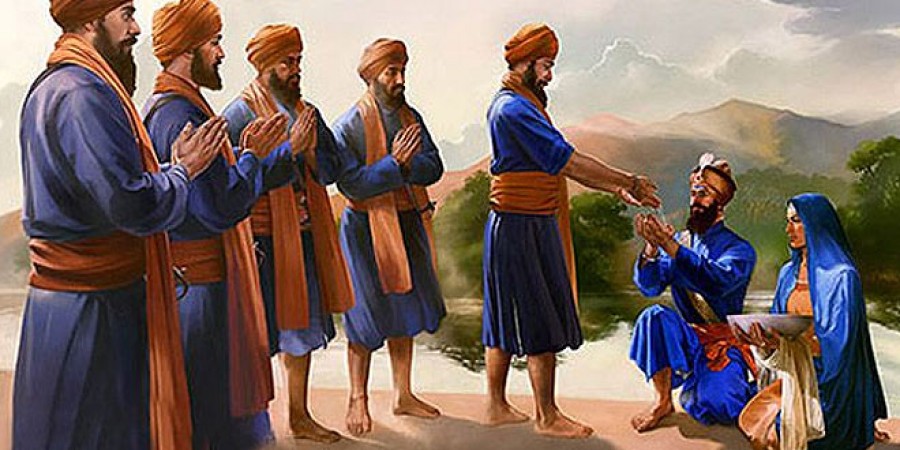
The term "Khalsa" designates the complete community of individuals who have actively chosen to adhere to the way of life established by Guru Gobind Singh, the tenth Sikh Guru; it is the way of life that the Khalsa community, which is self-managed through their democratic and collective choices, manages.
Since Vaisakhi 1699when the Khalsa was first forged, this community has existed as a distinct group; completely involved in their local societies but also aware of its social and spiritual responsibility as stipulated by the tenth master. Unlike, other societies, this group did not lay claim to territory or land and property, even when they had rightfully defeated their aggressive opponents.
Also Read:The Five K’s of Sikhism
The objectives of the Panth and Sikhi in general are identical, and each is a distillation of the other. As a community among other social groups, the Panth has always existed. Therefore, you have had members of the pantheon who have lived as Khalsa in places other than Punjab, where the Khalsa was first founded. Today, you can find the Khalsa in practically all of the world's major nations. They coexist peacefully with their communities while constantly being mindful of the underlying needs of their spiritual leaders.
The term "Khalsa Panth" refers to the holy or pure path, the same as Guru Nanak's older expression, "Nirmal Panth." It is the path of genuine spirituality, free of ritualism and priestly control. Another meaning is also attached to the word "Khalsa." During the Mughal era, this phrase was used to refer to crown territories in India that were managed directly by the emperor without the need for Jagirdars or other middlemen.
Also Read:Gurudwara Bangla Sahib: Raja Jai Singh Bungalow To Shrine
The phrase "Gurus ka Khalsa" can be translated to mean the Guru's very own, unmediated by mass (men who were appointed by the Sikh Gurus whose duties were to spread the teachings of the Guru and collect the island (1/10th tithe) that all Sikhs rendered to the Guru to aid in furthering the Sikh Religion, which covered, among other things, the construction of Gurdwaras, cities, tanks, and the maintenance of a Sikh Risaldari or military force.
The adage "power corrupts" had already started to apply to the Masands by the time of Guru Gobind Singh, who frequently started using the Sikh communal religious finances for their ends. Guru Gobind Singh declared that the Sikh Sangats would work directly with the Guru without any middlemen, ending the practice of appointing Masands. As a result of his introduction of Khande-di-paul (initiation with a double-edged sword) in 1699, the term "Khalsa" took on a more specific meaning. Since that time, everyone who was thus initiated has been referred to as the Khalsa Panth.
Also Read:Gurudwara Takht Sri Harmandir Patna Sahib
Guru Gobind Singh, the Sikhs' final living human guru, crowned the Guru Granth Sahib as the sect's 11th guru. He gave the Khalsa Panth's members full authority to shape and run the organization under the constant direction of Guru Granth Sahib. Since that time, the Khalsa has developed into a sort of spiritual commonwealth, a spiritually united community that awakens in each person both a spontaneous discipline and a disciplined spontaneity (Rehat).
Also Read:Takht Sri Damdama Sahib